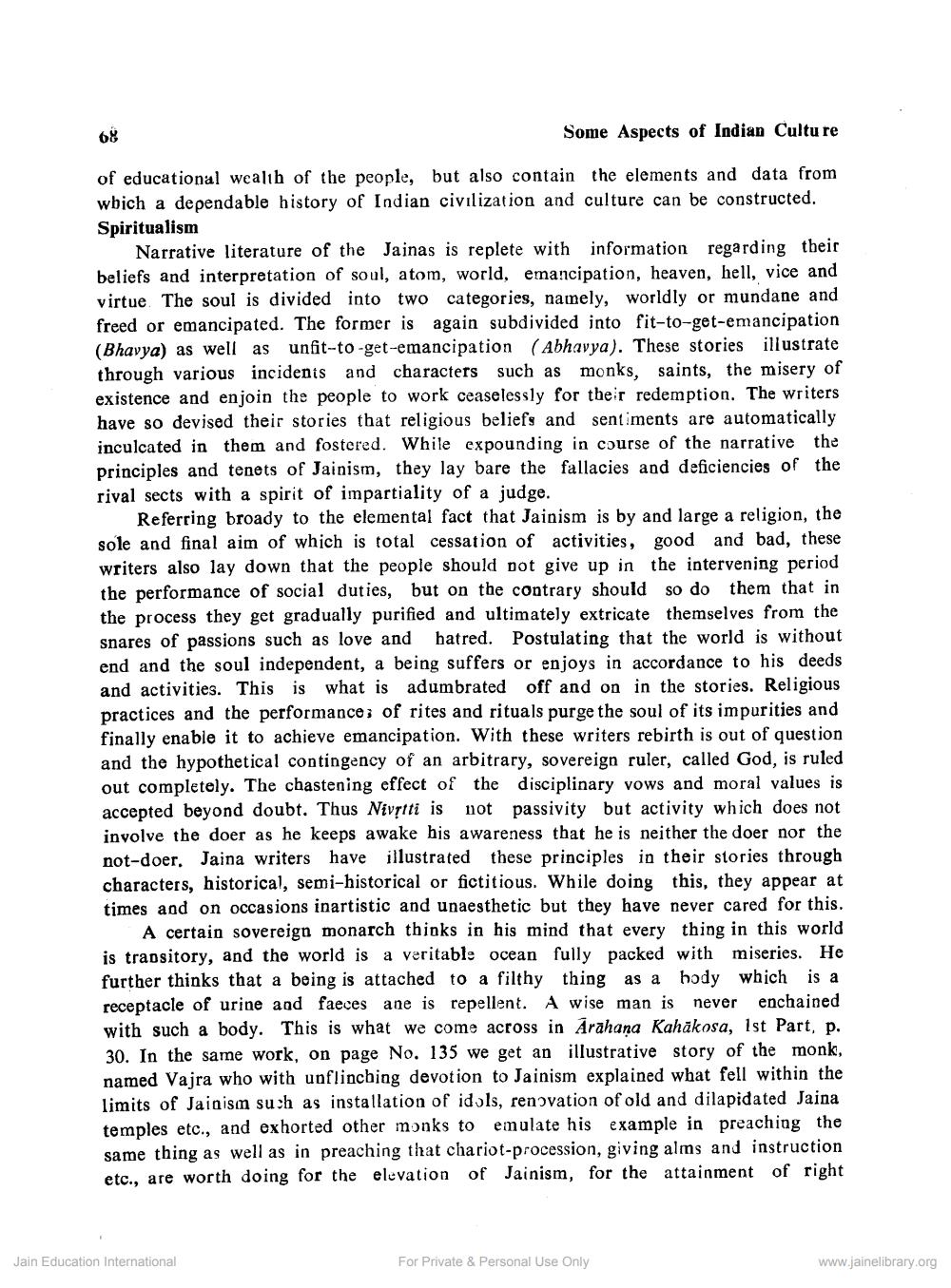________________
68
Some Aspects of Indian Culture
of educational wealth of the people, but also contain the elements and data from wbich a dependable history of Indian civilization and culture can be constructed. Spiritualism
Narrative literature of the Jainas is replete with information regarding their beliefs and interpretation of soul, atom, world, emancipation, heaven, hell, vice and virtue. The soul is divided into two categories, namely, worldly or mundane and freed or emancipated. The former is again subdivided into fit-to-get-emancipation (Bhavya) as well as unfit-to-get-emancipation (Abhavya). These stories illustrate through various incidents and characters such as monks, saints, the misery of existence and enjoin the people to work ceaselessly for their redemption. The writers have so devised their stories that religious beliefs and sentiments are automatically inculcated in them and fostered. While expounding in course of the narrative the principles and tenets of Jainism, they lay bare the fallacies and deficiencies of the rival sects with a spirit of impartiality of a judge.
Referring broady to the elemental fact that Jainism is by and large a religion, the sole and final aim of which is total cessation of activities, good and bad, these writers also lay down that the people should not give up in the intervening period the performance of social duties, but on the contrary should so do them that in the process they get gradually purified and ultimately extricate themselves from the snares of passions such as love and hatred. Postulating that the world is without end and the soul independent, a being suffers or enjoys in accordance to his deeds and activities. This is what is adumbrated off and on in the stories. Religious practices and the performance; of rites and rituals purge the soul of its impurities and finally enable it to achieve emancipation. With these writers rebirth is out of question and the hypothetical contingency of an arbitrary, sovereign ruler, called God, is ruled out completely. The chastening effect of the disciplinary vows and moral values is accepted beyond doubt. Thus Nivṛtti is not passivity but activity which does not involve the doer as he keeps awake his awareness that he is neither the doer nor the not-doer. Jaina writers have illustrated these principles in their stories through characters, historical, semi-historical or fictitious. While doing this, they appear at times and on occasions inartistic and unaesthetic but they have never cared for this.
A certain sovereign monarch thinks in his mind that everything in this world is transitory, and the world is a veritable ocean fully packed with miseries. He further thinks that a being is attached to a filthy thing as a hody which is a receptacle of urine and faeces ane is repellent. A wise man is never enchained with such a body. This is what we come across in Arahana Kahäkosa, Ist Part, p. 30. In the same work, on page No. 135 we get an illustrative story of the monk, named Vajra who with unflinching devotion to Jainism explained what fell within the limits of Jainism such as installation of idols, renovation of old and dilapidated Jaina temples etc., and exhorted other monks to emulate his example in preaching the same thing as well as in preaching that chariot-procession, giving alms and instruction etc., are worth doing for the elevation of Jainism, for the attainment of right
Jain Education International
For Private & Personal Use Only
www.jainelibrary.org




